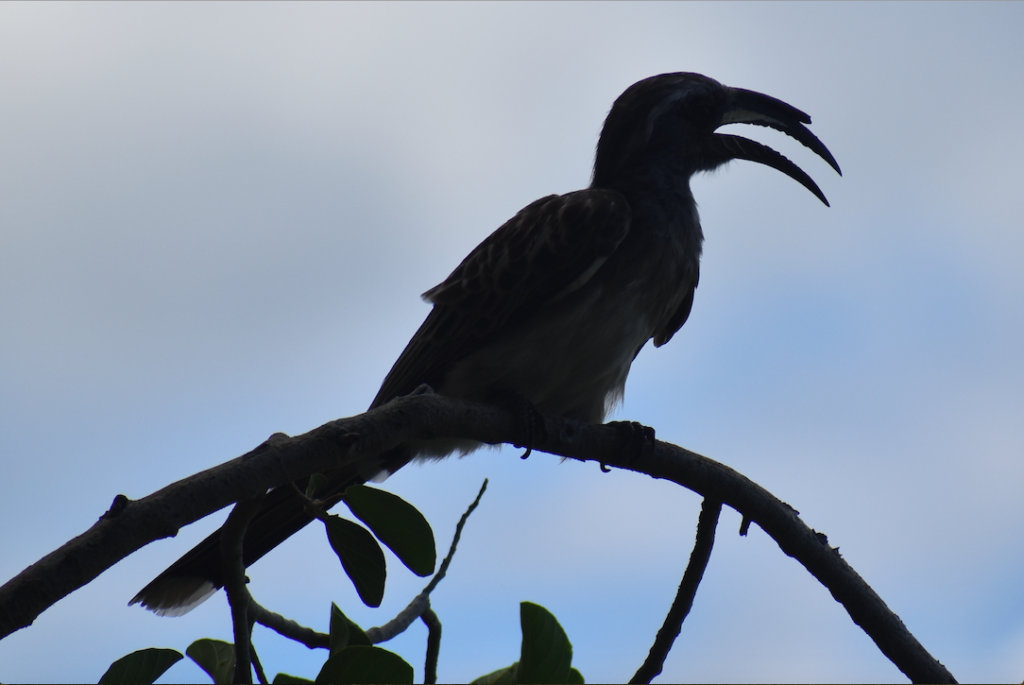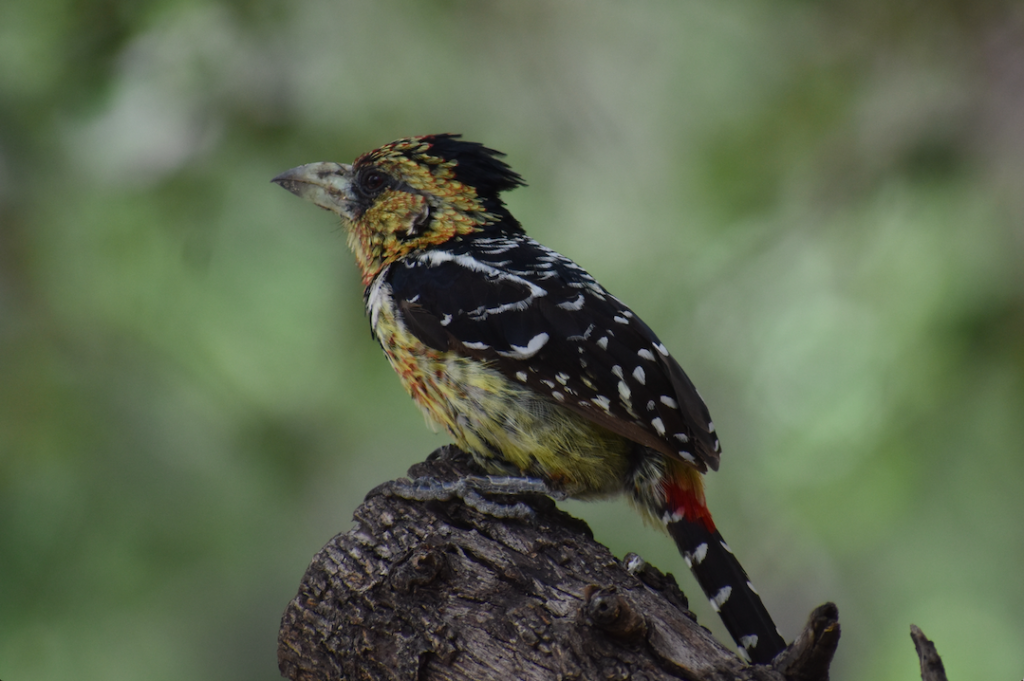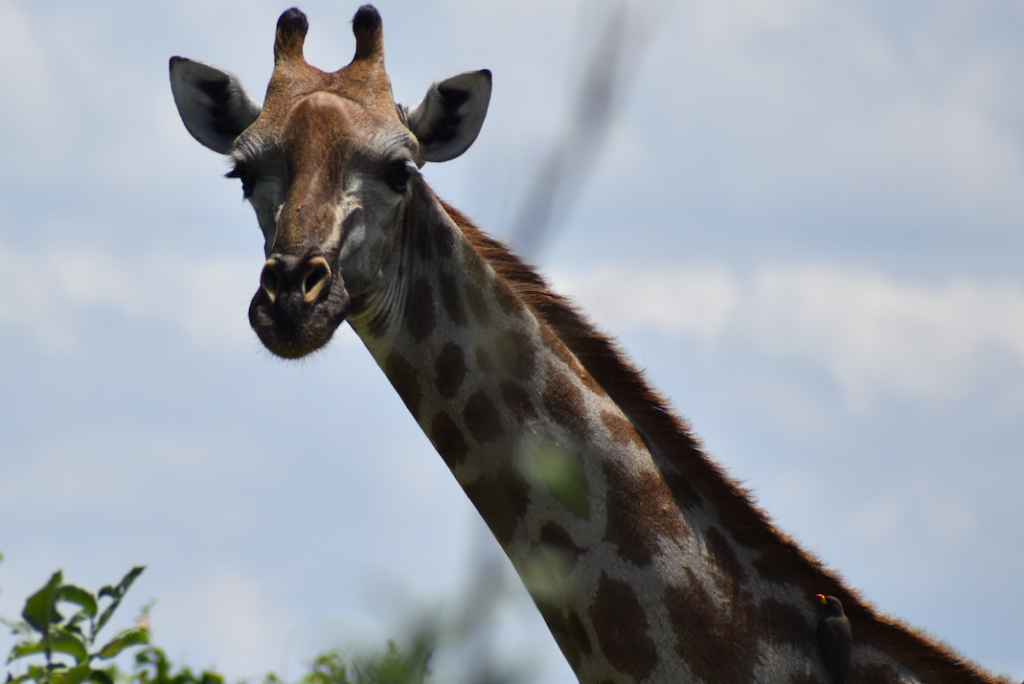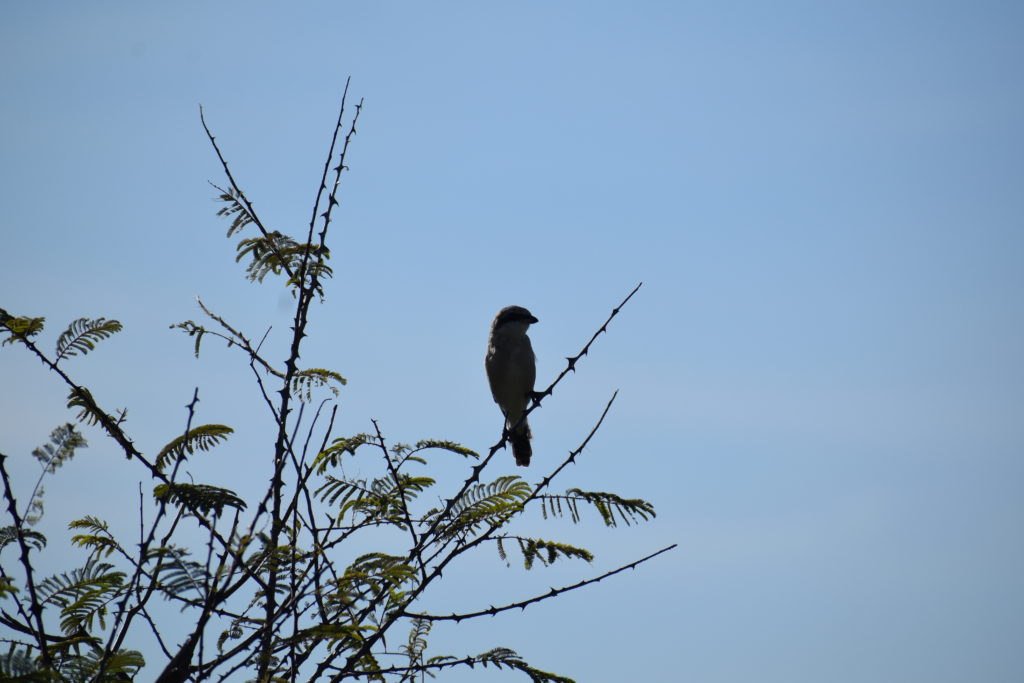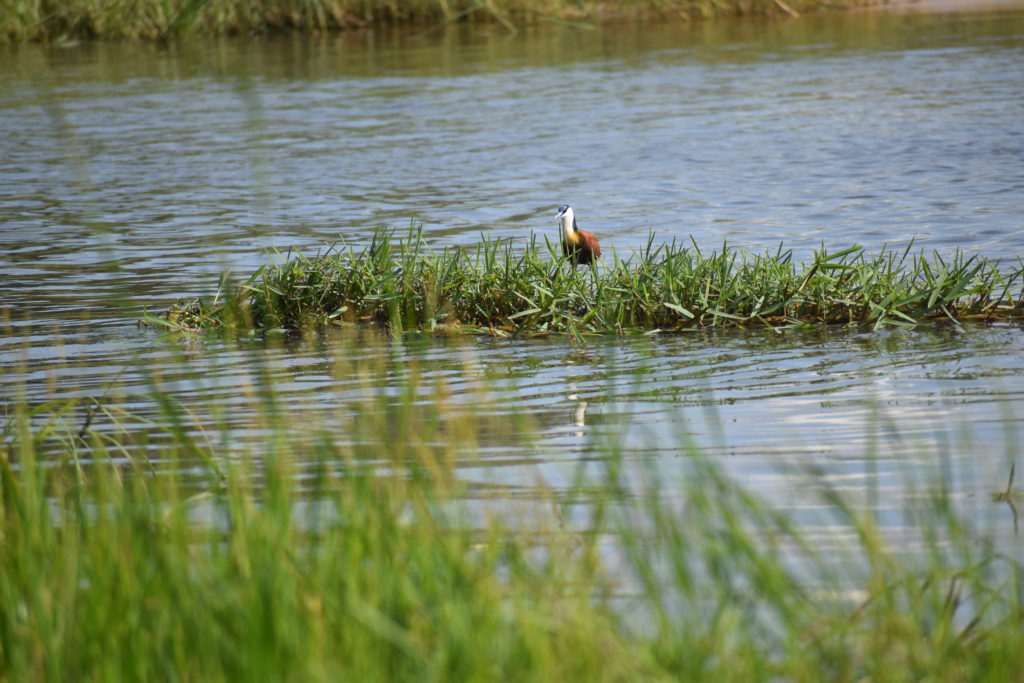by Meghan Murphy, of University of Vermont
Botswana student program – Spring 2021
The Okavango Delta hosts over 400 species of birds, and during our shortened stay I was able to pass the 150 mark. This vast diversity of avifauna meant that new birds were seen on a daily basis, presenting fresh identification challenges on a regular basis. There were plenty of unmistakable species, such as the remarkable Martial Eagle, the endlessly amusing Gray Go-Away-Bird (one of the greatest bird calls of all time-seriously, look it up!), unbelievably lengthy-tailed Whydahs, Ostrich, Kori Bustards, Secretarybirds, Hammerkops, Jacanas, and lovely Lilac-breasted Rollers. I particularly enjoyed the variety of species to be found in some of my favorite bird groups, like Shrikes, Woodpeckers, Crows, Shorebirds, and Kingfishers. African Green Pigeons (think Mourning Dove but green), and Pied Crows (a crow that looks like it is wearing a white t-shirt) were particularly great examples of familiar species with a twist. Falcons are my favorite bird group, and the Amur falcons we saw in the midst of migration were one of my favorite species we encountered. Unlike their larger falcon relatives, these little raptors primarily feed on insects and small ground-dwelling prey as opposed to the avian delicacies enjoyed by other members of their family.
The shrubbier landscapes in the Delta offer numerous showy species that create lively spectacles in their monochromatic landscape. However, there are some species that are content to match the brown with even more brown. They are small and quick, offering little in the way of field marks. These are the “LBBs”, or “Little Brown Birds”. As frustrating as they can be to identify the challenge is tantalizing, luring bird enthusiasts with the opportunity to hone quick observation skills in a way that could not be achieved by the ostentatious neighboring species. Scrub robins and larks are two decidedly brown examples of this group. Sorting the troublesome group to a family level (is it a lark or a robin?) is a key identification step. Looking at the body shape, flight patterns, noting any field marks or behaviors, and making habitat associations are other important steps in identifying the bird. Additionally, a willingness to admit defeat while noting what features you wished you had noticed in the moment will all hone birding skills on a universal scale. Then of course, one can open the door to the equally perplexing world of avian vocalizations.





